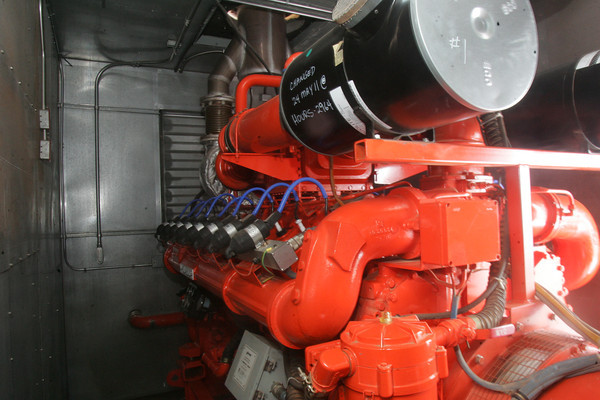For years, the city has had to pay about $20 per ton for disposal of sludge produced at its wastewater treatment plant in area landfills.
Now an almost-completed $3.5 million project at the facility, 2350 Abbe Road, Sheffield, is expected to begin saving the city money by having thousands of tons of sludge converted to methane gas to create electricity and heat to power and warm the plant.
“We’re getting a dedicated source to get rid of our sludge, saving on our electrical bill, lowering our costs per ton and keeping a lot of stuff out of landfills,” Mayor David Gillock said Tuesday.
Alan Johnson, VP for Project Management for the Quasar Energy Group talked about the Bio Digester tank, left, and the Feed Stock Tank on the grounds of the French Creek Wastewater Treatment …
Alan Johnson, VP for Project Management for the Quasar Energy Group talked about the Bio Digester tank, left, and the Feed Stock Tank on the grounds of the French Creek Wastewater Treatment …
Quasar Energy Group, a Cleveland-based firm, is nearing completion on a $3.5 million anaerobic digester, a 750,000-gallon, silo-like structure that breaks down sludge by using bacteria that function in a manner similar to that found in nature.

“The whole thing mimics a very big cow’s stomach,” according to Alan Johnson, Quasar’s vice president for project management, during a visit to the construction site Tuesday.
The city looks for the digester to go online in August, according to Gillock, after a period of testing.
Another plus of the biodigester is the methane gas it will produce and maintain beneath its dome — thus eliminating its release into the atmosphere as greenhouse gas.
Plans call for the methane gas to be converted into electricity, which will be used to help power and heat the treatment plant with the help of an orange-colored 16-cylinder engine in a separate building next to the digester.
“That should supply two-thirds of the power for the plant,” Johnson said.
The project was made possible by more than $2 million in federal grants and loans. Remaining sludge will then have water separated from it in a $600,000 centrifuge, for which the city is footing the bill.
“It’s a wash for us because if we didn’t do the project, we’d have to spend another $600,000 to build a storage tank (for the sludge) plus install a scrubber system,” Gillock said.
Once that process is complete, Quasar will haul the treated sludge away daily.
“We won’t have to deal with disposal or storage anymore,” Gillock said. “That was a huge headache.”
Under a long-term contract with Quasar, the city will pay a $2 fee for every ton of sludge sent to the digester, which is a fraction of the $20 to $21 per ton it has been paying to dispose of it through a consulting firm that located EPA-approved farmers who used the sludge as field fertilizer.
The city also won’t be assessed a $50,000 feasibility fee Quasar normally charges, Gillock said.
“Since we’re a new venture for them, we don’t have to pay that,” Gillock said.
Quasar Energy Group President Mel Kurtz said Gillock and other officials, including Safety-Service Director Jeff Armbruster and French Creek Superintendent Don Daley, were proactive when it came to exploring the concept of a biodigester.
“They were all really ahead of the curve on this,” Kurtz said.
A similar biodigestor operated by Quasar in Cleveland’s Collinwood neighborhood produces enough methane to power 600 to 700 homes — although the gas currently is not used for such purposes.
Walmart stores in the Wooster area are sending much of their food waste to a Quasar biodigester, Johnson said.
“That’s all garbage that is no longer being sent to landfills,” Johnson said.
Anh Tuan
